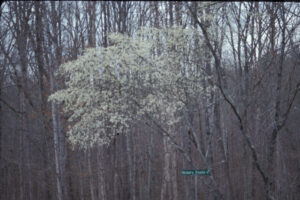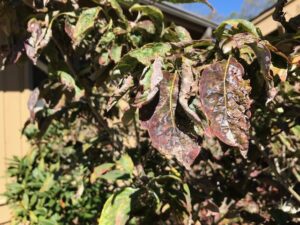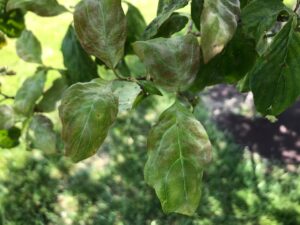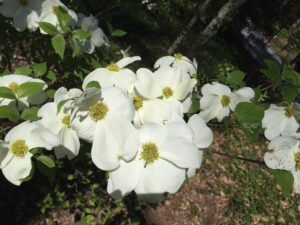Native Dogwoods Mostly Gone in the Forest
go.ncsu.edu/readext?784472
en Español / em Português
El inglés es el idioma de control de esta página. En la medida en que haya algún conflicto entre la traducción al inglés y la traducción, el inglés prevalece.
Al hacer clic en el enlace de traducción se activa un servicio de traducción gratuito para convertir la página al español. Al igual que con cualquier traducción por Internet, la conversión no es sensible al contexto y puede que no traduzca el texto en su significado original. NC State Extension no garantiza la exactitud del texto traducido. Por favor, tenga en cuenta que algunas aplicaciones y/o servicios pueden no funcionar como se espera cuando se traducen.
Português
Inglês é o idioma de controle desta página. Na medida que haja algum conflito entre o texto original em Inglês e a tradução, o Inglês prevalece.
Ao clicar no link de tradução, um serviço gratuito de tradução será ativado para converter a página para o Português. Como em qualquer tradução pela internet, a conversão não é sensivel ao contexto e pode não ocorrer a tradução para o significado orginal. O serviço de Extensão da Carolina do Norte (NC State Extension) não garante a exatidão do texto traduzido. Por favor, observe que algumas funções ou serviços podem não funcionar como esperado após a tradução.
English
English is the controlling language of this page. To the extent there is any conflict between the English text and the translation, English controls.
Clicking on the translation link activates a free translation service to convert the page to Spanish. As with any Internet translation, the conversion is not context-sensitive and may not translate the text to its original meaning. NC State Extension does not guarantee the accuracy of the translated text. Please note that some applications and/or services may not function as expected when translated.
Collapse ▲
Dogwood anthracnose was first diagnosed in 1978. Since then it has basically wiped out the dogwood in the forests of Western North Carolina. A few survivors can still be found here and these in the mountains but for the most part these are few and far between. This arboricultural tragedy has been mostly forgotten.
The Dogwood anthracnose fungus infects wood creating a canker which eventually causes plant death. Plants in moist shady areas were particularly susceptible. This includes the dogwood of the mountains. Dead dogwood stems still stand in many areas.
Look Alike
Do not confuse Dogwood anthracnose with Spot anthracnose. Spot anthracnose disease is not fatal to dogwoods. It does cause a severe leaf spot and leaf crinkling during wet years.
Powdery mildew can crinkle up leaves as well. Control of these diseases is very difficult with fungicides requiring spraying every 7-10 days during the growing season. The best thing to do is keep the plants healthy through proper care and to remove the infected fallen leaves.
Proper planting and care can help dogwoods in the landscape survive. Proper planting, adequate but not excessive mulching, avoiding too much sun, watering during drought and fertilizing can help trees fight diseases. Using Spot anthracnose resistant varieties is important.
***update – I received a question recently. The client was wondering why powdery mildew seems more prevalent today than in the past. My answer: “The powdery mildew fungus that attacks dogwoods has always been around as far as I know. The species, Erysiphe pulchra, is not listed as an invasive organism. My suspicion is that dogwoods have always been susceptible but because we plant dogwoods outside of their preferred situation, they get stressed and are therefore more susceptible to all kinds of health issues.
From NC Plants
Cultivars / Varieties:
- ‘Appalachian Blush’
- ‘Appalachian Spring’
white flowers - ‘Cherokee Brave’
Red flowers, resistant to powdery mildew, moderately resistant to spot anthracnose - ‘Cherokee Chief’
Red flowers, resistant to spot anthracnose - ‘Cherokee Daybreak’
Variegated foliage, highly susceptible to spot anthracnose - ‘Cherokee Princess’
White flowers, highly susceptible to spot anthracnose - ‘Cherokee Sunset’
variegated foliage - ‘Cloud 9’
white flowers - ‘Double White’
Moderately resistant to powdery mildew and spot anthracnose - ‘Pringlei’
- ‘Pygmy’
dwarf cultivar - ‘Rubra’
Pink flowers, moderately resistant to spot antracnose - ‘Sweetwater’
red flowers - ‘Weaver’s White’
Resistant to spot anthracnose - ‘Welch’s Bay Beauty’
Resistant to spot anthracnose







